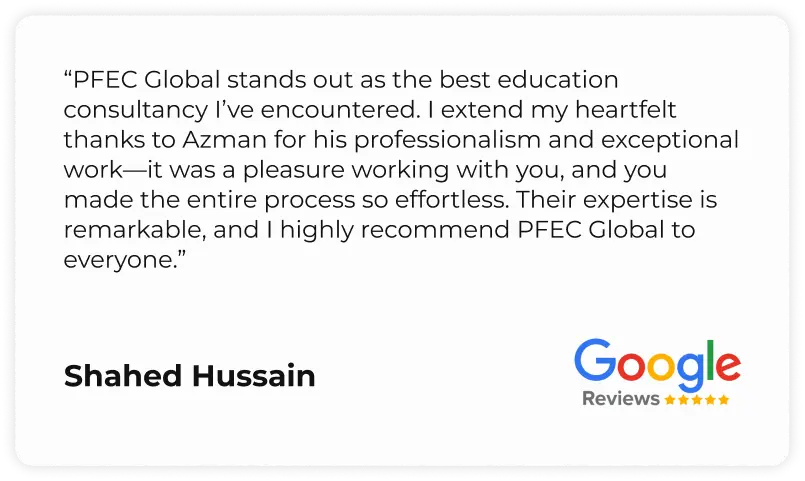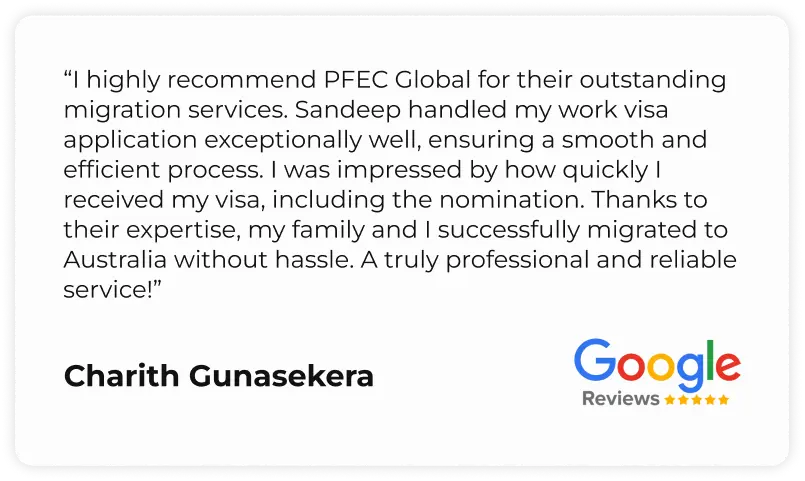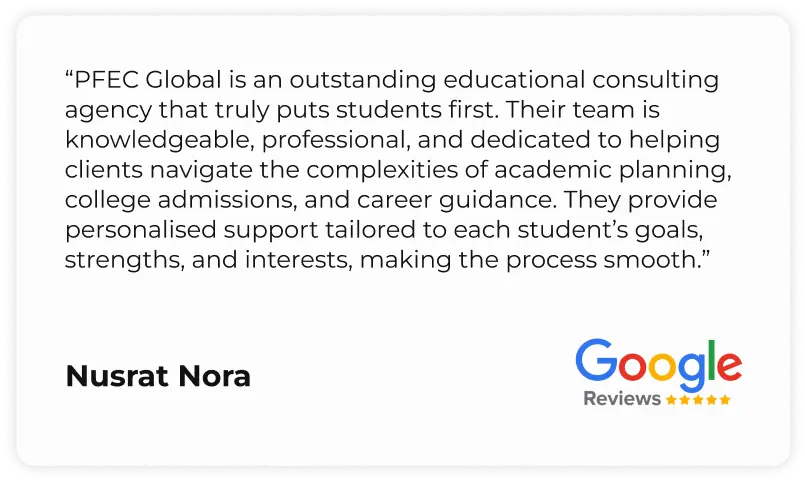National Innovation Visa (Subclass 858): Migrate to Australia as a Global Talent

Health insurance is an essential requirement for a worry-free experience while studying abroad.
International Medical Coverage: Health insurance provides you with the peace of mind to receive medical care anywhere in the world, ensuring you won't face overwhelming expenses.
Visa and Enrollment Support:Having health insurance can make obtaining a student visa and enrollment easier. This reduces the chances of your applications being delayed or rejected.
Financial Protection: In the event of an unexpected incident, having health insurance ensures that your medical expenses are covered. It safeguards you from potential financial stress.
Legal Compliance: Many countries create specific health insurance for international students. Securing this insurance not only safeguards your well-being but also shields you from potential legal complications and the risk of deportation. Protect yourself and ensure a smooth study experience abroad.
Comprehensive Care: Health insurance covers expenses related to hospital stays, prescription medications, mental health support, and much more.
Register with Us to Take the Next Step
Country-wise rules
The USA has a unique system that students must navigate to meet certain criteria. In contrast, Australia requires international students to have Overseas Student Health Cover (OSHC). Similarly, in the UK, students are obligated to pay an Immigration Health Surcharge (IHS) to gain access to the National Health Service (NHS). Additionally, some universities have their own specific requirements, which often include particular coverage limits in their health insurance schemes.
Selecting a plan
Recognizing the diverse needs of students, universities create customized health insurance policies that provide essential coverage. Students can conveniently enroll in these plans during their registration process, ensuring peace of mind from day one. If a university does not offer its own insurance, students must seek private health insurance, which may not fully meet their specific needs. It's crucial for universities to invest in comprehensive health insurance options that prioritize student well-being and security.
Purchasing Health Insurance
Health insurance is essential for students, and selecting the right plan is vital for their well-being. By carefully considering their unique needs, students can find a plan that offers the best balance of cost and benefits. After choosing a suitable plan and making the necessary payment, students will receive a certificate as proof of their coverage, ensuring assurance during their academic journey.
Country-wise rules
The USA has a unique system that students must navigate to meet certain criteria. In contrast, Australia requires international students to have Overseas Student Health Cover (OSHC). Similarly, in the UK, students are obligated to pay an Immigration Health Surcharge (IHS) to gain access to the National Health Service (NHS). Additionally, some universities have their own specific requirements, which often include particular coverage limits in their health insurance schemes.
Country-wise rules
The USA has a unique system that students must navigate to meet certain criteria. In contrast, Australia requires international students to have Overseas Student Health Cover (OSHC). Similarly, in the UK, students are obligated to pay an Immigration Health Surcharge (IHS) to gain access to the National Health Service (NHS). Additionally, some universities have their own specific requirements, which often include particular coverage limits in their health insurance schemes.
National Innovation Visa (Subclass 858): Migrate to Australia as a Global Talent
If you have built an international reputation in your field and want to take your work further, Australia offers a permanent pathway through the National Innovation Visa (subclass 858).
This visa is designed for people who are already making a global impact. It is for researchers, entrepreneurs, tech leaders, investors, creatives, and athletes who can contribute to Australia’s future industries.
You do not need sponsorship to apply. You must first submit an Expression of Interest (EOI). If the Department recognises your achievements, they will invite you to apply for permanent residency.
In this guide, we explain who this visa is for, what “exceptional talent” really means, and how to prepare your EOI the right way.
What Is the National Innovation Visa and Who Is It For?
The National Innovation Visa (NIV) is a permanent visa for high-calibre professionals who have made significant contributions in their field and can help drive Australia’s future economy.
It is part of Australia’s strategy to attract world-class talent in areas critical to national growth, such as critical technologies, renewable energy, health industries, and more.
You may be eligible if you are:
- A globally recognised expert in your profession
- A researcher or scientist with impactful, peer-reviewed work
- An entrepreneur, innovator, or investor with commercial success
- A creative professional or athlete with international acclaim
- Nominated by a Commonwealth, state, or territory government agency
Key Features:
- Permanent residency from day one
- No age limit or English test if achievements meet the required level
- No sponsorship required — just a valid invitation to apply
- Fast-tracked assessment for top-tier talent in priority sectors
You cannot apply directly for this visa. The process starts with submitting an Expression of Interest (EOI), where the Department of Home Affairs will assess your achievements and potential. If they recognise your contribution, they may invite you to apply.
Expert Tip: Most successful applicants hold major international awards, lead influential research, or have built ventures recognised globally. Include this evidence clearly in your EOI.
Key Benefits of the National Innovation Visa
The National Innovation Visa (subclass 858) gives highly talented individuals a direct path to permanent residency in Australia. Unlike other skilled visas, it recognises global influence and proven impact — not just qualifications or employment history.
Why this visa is unique:
- Permanent residency from the day your visa is granted
- No age limit for applicants
- No points test
- No job offer required
- Faster processing for internationally recognised candidates
- Freedom to live, work, and study anywhere in Australia
- Include your partner and dependent children in the same application
- No requirement to work in a specific role or state
This visa is built for individuals who have already achieved significant success on the world stage — and are ready to contribute further in Australia.
Eligibility Criteria: Are You a Fit for This Prestigious Visa?
The National Innovation Visa is designed for those with a proven track record of excellence. You must show internationally recognised achievements that are exceptional, sustained, and current. This is not a visa for potential — it is for demonstrated global impact.
You may be eligible if you:
- Have exceptional and outstanding achievements in your field
(e.g., research, business, technology, arts, sports) - Can provide evidence of international recognition
- Have a record of sustained leadership or contribution
- Are currently active in your area of expertise
- Can demonstrate a clear benefit to Australia’s future prosperity
- Are nominated by an Australian government agency or expert body
(using Form 1000)
Key sectors considered for nomination include:
- Tier One sectors: Critical Technologies, Health Industries, Renewable and Low Emission Technologies
- Tier Two sectors: Agri-food, Defence and Space, Education, FinTech, Transport, Infrastructure, Resources
Expert Tip: Your nomination must come from an expert Commonwealth, State or Territory agency. Ensure your achievements are backed by evidence like awards, patents, academic citations, or international media coverage.
This visa is not about potential. It is awarded to individuals already performing at the highest level in their industry or discipline.
How the Invitation-Only Process Works (EOI to Visa)
The National Innovation Visa (subclass 858) is not open for direct application. You must first be invited by the Department of Home Affairs. The process involves two stages — the Expression of Interest (EOI) and, if successful, the formal visa application.
Step 1: Submit Your Expression of Interest (EOI)
To be considered for invitation, you must lodge an EOI through the official form.
Your EOI must include:
- A current passport bio-data page
- A strong, detailed resume or CV
- Evidence of your highest academic qualification
- A nomination by a Commonwealth, State or Territory agency (Form 1000, if applicable)
- Documentation showing international recognition and significant contributions
Common mistakes to avoid:
- Making vague or exaggerated claims without evidence
- Listing awards or achievements without explaining their relevance
- Submitting files in non-English languages or unsupported formats
- Forgetting to include your most recent work or nomination
📌 Important:
Your EOI stays valid for 2 years. You cannot edit it once submitted. You may only submit a new EOI if there is a significant change in your profile.
Step 2: Lodge Your Visa Application (Post-Invitation)
If the Department of Home Affairs selects your EOI, you will receive an invitation.
You must then:
- Apply via ImmiAccount within 60 days
- Upload all required supporting documents:
- Proof of achievements
- Nomination (Form 1000)
- Identity documents
- Evidence of qualifications and recognition
- Proof of achievements
- Pay the visa application fee
📌 Note:
An invitation does not guarantee visa approval. Your application will be assessed on the quality and relevance of the evidence you provide.
Indicators of Exceptional and Outstanding Achievement
To qualify for this exceptional achievement visa Australia, you must already be operating at a top level in your field. The Department looks for internationally recognised results and leadership — not future potential.
Examples of qualifying achievements:
- Winners of major international awards, such as:
- Nobel Prize
- Fields Medal
- Academy Awards
- Nobel Prize
- Recipients of national-level research grants (e.g., ARC or NHMRC funding)
- Inventors with patents that have commercial or scientific value
- PhD holders with high citation indexes or published thought leadership
- Founders or executives of globally scaling, innovation-driven companies
- Regular keynote speakers at major international conferences
- Influencers of international policy, law, health, or technology frameworks
- Creative professionals featured in top global platforms or institutions
📌 Your recognition must be current. Past awards alone are not enough — you must be active in your field and able to show your continued contribution.
Priority Sectors for the National Innovation Visa (2025)
Australia’s National Innovation Visa (subclass 858) focuses on global talent driving impact in future-critical industries. If your work aligns with a priority sector, your Expression of Interest (EOI) will receive stronger consideration.
Tier One Sectors – Highest Priority
These sectors are key to Australia’s long-term economic growth and global competitiveness. Candidates in these industries are assessed with top priority:
- Critical Technologies
Includes artificial intelligence, quantum computing, robotics, cybersecurity, blockchain, and advanced digital systems - Health Industries
Covers biotechnology, medical devices (medtech), digital health, pharmaceuticals, clinical trials, and health data systems - Renewables and Low Emission Technologies
Focuses on clean energy, green hydrogen, battery storage, decarbonisation tools, and sustainable power systems
📌 Tip: If your career spans multiple Tier One domains, highlight cross-sector innovation clearly in your EOI.
Tier Two Sectors – Secondary Priority
These sectors are also vital to national development. While prioritised slightly lower, individuals with exceptional records in these areas remain highly competitive:
- Agri-food and AgTech – sustainable food systems, smart farming, biotech crops
- Defence Capabilities and Space – aerospace, satellites, national security tech
- Education – EdTech, academic leadership, institutional innovation
- Financial Services and FinTech – blockchain finance, digital payments, regulatory tech
- Infrastructure and Smart Transport – intelligent mobility, urban planning tech, logistics
- Resources and Mining Technology – green mining, automation, energy efficiency
📌 Expert Tip: Explicitly connect your career outcomes to sector-specific needs in Australia. Use metrics, innovations, or global partnerships to show value.
- Contributory visas are processed faster but involve significantly higher costs
- Non-contributory visas are more affordable, but the queue can exceed 30 years
- Some applicants begin with a temporary visa (Subclass 173 or 884) before applying for a permanent option
Expert Tip: Plan for Assurance of Support (AoS), health checks, and other costs in addition to the visa application fee. These can affect overall readiness.
Nomination: Why It Matters and Who Can Nominate You
You cannot apply for the Subclass 858 National Innovation Visa without a valid nomination. It is a core requirement and plays a major role in how your EOI is assessed.
Who Can Nominate You?
Your nominator must be:
- An Australian Commonwealth, State, or Territory government agency
- Recognised as an expert body in your field
- Able to verify your global achievements and future potential
The nomination process must include:
- A completed Form 1000
- A formal statement of support outlining your impact and value to Australia
Why Nomination Is Crucial
- It confirms your eligibility and international calibre
- It boosts your ranking, especially in high-priority sectors
- Without it, you cannot receive an invitation to apply
How to Find a Suitable Nominator
- Research agencies that support your sector (e.g., CSIRO, Austrade, state-based innovation or health departments)
- Prepare a professional summary of your background and achievements
- Contact the agency with clear, concise reasoning for why your work benefits Australia
📌 Note: Agencies are selective. A strong approach includes sector relevance, verified achievements, and a clear fit with national goals.
Step-by-Step: How to Submit a Strong Expression of Interest (EOI)
Submitting a high-quality Expression of Interest (EOI) is the first and most critical step toward the National Innovation Visa (subclass 858). The strength of your EOI will directly influence whether you receive an invitation to apply.
Required Documents
Prepare and upload the following materials:
- Passport bio-data page
- CV or résumé outlining career milestones and major achievements
- Highest qualification certificate (PhD, Master’s, or equivalent)
- Evidence of global recognition, such as:
- Awards
- Patents
- Research publications
- Media features or keynote roles
- Awards
- Nomination documents, including:
- Form 1000
- Statement of support from a government agency
- Form 1000
Accepted File Formats
- Only PDF, JPG, or PNG are accepted
- Do not submit files via Google Drive, Dropbox, or other cloud links
- Each file should be clearly named and easily identifiable
Language Requirements
- All documents must be in English
- If documents are in another language, attach certified English translations
Common Mistakes to Avoid
- Submitting vague or incomplete documents
- Using the wrong file formats
- Repeating the same content across multiple files
- Listing achievements without evidence (e.g. awards, grants, or publications)
📌 Expert Tip: You cannot edit or add to your EOI once it’s submitted. Review every detail carefully before uploading.
What Happens After You Submit Your EOI
Once submitted, your Expression of Interest remains active in the system for up to two years. Here’s what to expect next:
Timeline and Notifications
- You’ll receive an immediate confirmation message on submission
- The Department may assess your EOI at any time during the two-year period
- If selected, you’ll receive an invitation to apply for the National Innovation visa
Important EOI Rules
- You cannot update your EOI after submission
- Submit a new EOI only if there’s a major change (e.g. new awards, updated nomination)
- Do not submit multiple EOIs unless your profile has significantly changed
- The Department does not provide feedback if you’re not invited
If You Are Invited
- You will have 60 days to submit your full visa application
- Lodge your application through ImmiAccount
- Upload all required documents and pay the application fee
If You Are Not Invited
- Your EOI stays valid for 2 years
- You may still be invited later if your profile aligns with priority sectors
- You can re-submit a new EOI only if your circumstances have changed
📌 Expert Tip: Your best chance lies in clearly connecting your work to a priority sector and providing solid evidence of global impact.
Why Work With PFEC Global for the National Innovation Visa?
The National Innovation Visa (Subclass 858) demands more than basic paperwork. It requires a compelling case backed by global credentials — and that’s where PFEC Global makes a real impact.
How PFEC Supports Your Application
We offer complete, strategic support at every step:
- Eligibility Review: We assess your background against Subclass 858 criteria and priority sectors
- Nominator Identification: We help match you with the right Commonwealth, State, or Territory agency
- EOI Preparation: We guide you in presenting your achievements through a compelling Expression of Interest
- Document Assistance: We help format and submit Form 1000 and all supporting materials professionally
- End-to-End Guidance: From your first inquiry to final visa lodgement, we’re with you throughout
We’ve supported scientists, tech founders, creatives, and academics to present their global impact in a way Australian agencies recognise.
📌 Expert Insight: Subclass 858 is one of the most selective permanent residency pathways. A strategic, well-supported application can make all the difference.
Conclusion
The National Innovation Visa opens a unique door — permanent residency in Australia based on global talent, not job offers or points.
But this is not a standard visa. It’s designed for individuals already leading in their field. To succeed, you need more than credentials — you need a clear, evidence-backed application aligned with Australia’s future sectors.
PFEC Global offers expert guidance to help you:
- Understand your eligibility
- Align your EOI with national priorities
- Present your achievements clearly and credibly
If you’re ready to pursue a future in Australia based on what you’ve already built, we’re here to help you make your case — confidently and completely.
What is the Assurance of Support (AoS)?
- A financial bond provided by the sponsor
- Usually $10,000+ per applicant, held for 10 years
- Guarantees the parent will not rely on government welfare
Expert Tip: For contributory visas, AoS is mandatory. Some sponsors pool funds from multiple family members to meet this requirement.
Ready to Apply for Your Australian Partner Visa?
You deserve to live with your partner—without long-distance stress or uncertainty. Let PFEC help you make that future a reality.
📞 Book a free consultation with a PFEC Partner Visa expert
📄 Download our Partner Visa Checklist to prepare your documents without confusion
🤝 Get trusted support from people who understand both Australian law and your personal journey
Simplify your Education & Migration Needs with PFEC Global's Expert Guidance
Book Free Consultation →



What are my options and possibilities for submitting an Australian PR application?
Depending on your situation, you have many options when applying for an Australian Permanent Residency (PR). The Skilled Work Regional (Provisional) Visa (Subclass 491) is for regional employment; the Skilled Nominated Visa (Subclass 190) is for skilled workers who need state or territory nomination. There are several routes for family sponsorship and employer-sponsored visas, each with particular perks and requirements
If I don't have enough points to submit an application for a PR. What are my options?
If your points total is not enough for a PR application, think about being nominated by a state or territory, which may provide more points. Getting additional job experience, taking language exams like the PTE or IELTS, or going to further school in Australia to improve your credentials are all good ways to improve your English.
Does applying for a new course and student visa when I know my TR (Temporary Resident) is about to expire present any risks?
Applying for a new PR pathway courses in Australia and a student visa while your Temporary Resident visa is about to expire might be dangerous. To prevent possible visa denial, make sure your application is complete and satisfies all Department of Home Affairs standards. Learn the terms of any bridging visa that could be applicable throughout the application process, and if you’re not sure whether your application is complete or if you qualify, get expert help.